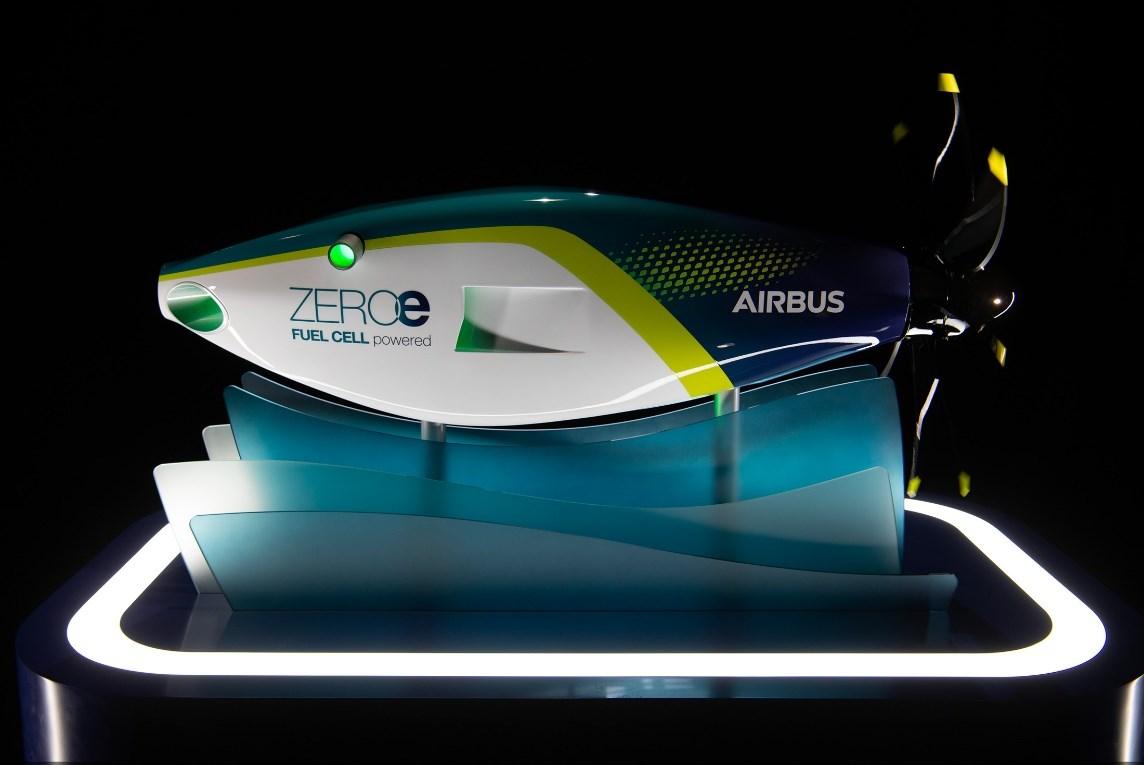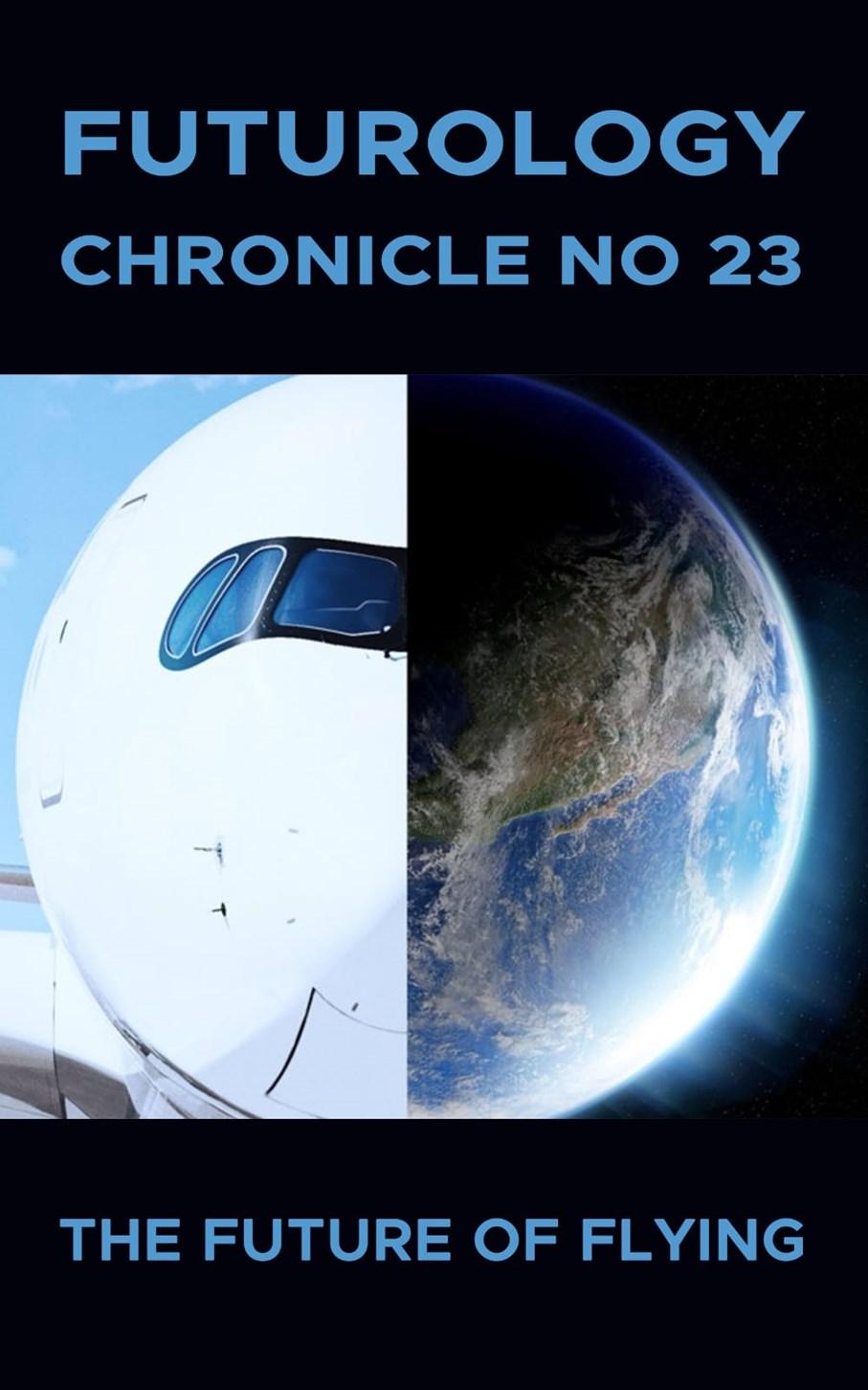
FU-
Wilbur Wright – 1903
Page 2 THE FUTURE OF FLYING
“More than anything else the sensation is one of perfect peace mingled with an excitement that strains every nerve to the utmost, if you can conceive of such a combination.”
– Front cover by Frank, conceived with AI Mid-Journey.
“To catch the reader's attention, place an interesting sentence or quote from the story here.” THE FUTURE OF FLYING Page 3
1 STILL INNOVATIVE AT 122 YEARS OLD! 4 2 WHITEHEAD VS WRIGHT: FIRST HISTORIC FLIGHT 5 CONTROVERSY 3 IKARUS OR HEROES 6 4 PE DAL TO THE METAL, A RUSH IN THE AIR! 7 5 CHITTY CHITTY BANG BANG, FOR REAL! 8 6 EKRANOPLAN WHO? 9 7 DRONE CARGO, NO PILOT 10 8 VERTIGO IN VERTIPORT 11-12 9 E-VTOL MARKET GROWTH OR BUST! 13 10 AIR TAXIS, READY TO BE FIRST, WHATEVER? 14 11 ELECTRIC OR HYDROGEN FOR LIGHT AND MEDIUM SIZE 15-16 AIRCRAFT 12 AIRBUS VS BOEING : A BRUISED RIVALRY 17-18 13 CHINA AIRCRAFT INDUSRTY IS FAR FROM BEING ON PAR 19-20 14 WINGS RESEARCH DISCORD 21-22 15 GREEN FUELS DISSONANCE 23-25 16 EASYJET JOINS FIRMLY THE HYDROGEN PROPULSION CAMP 26 17 GREENPEACE NEW TARGET: BUSINESS JET SOARING 27-28 POLLUTION 18 AMSTERDAM HUB TO HALT NIGHT FLIGHTS 29 AND BAN PRIVATE JETS TO CUT CO2 19 ENGINES: SAME FACE TO FACE USA VS EUROPE 30-32 20 IS THERE A PILOT IN THE PLANE 33-34 21 SUPERSONIC FLIGHT IS BACK! 35-37 22 BOOM: A NEW COMMERCIAL ADVENTURE 38-39 23 CHINA JOIN THE CIVIL HYPERSONIC RACE 40 24 CIVIL HYPERSONIC: NOT YET ON THE CARDS 41-42 25 WILL WE BE STILL FLYING IN 20 YEARS? 43-44 26 GOOD SPIRIT CONCLUSION 45-46 27 SOURCES AND PUBLICATION PROGRAM 47 28 NEXT MONTH JUNE EDITION NO 24 : A.I 2.0 48 (UPDATE FROM NO 3 OF MARCH 2021) 29 SIGNATURE 51
CONTENTS
STILL INNOVATIVE AT 122 YEARS OLD!
With ground-breaking developments being made in technology, sustainability, and passenger experience, the aviation industry is constantly evolving. The future of flying is looking to be truly revolutionary, with supersonic commercial flights and drone taxis that can transport people between cities.
Vertical takeoff and landing (VTOL) drone taxis are one of the most exciting developments in aviation today. By offering a quick, practical, and sustainable alternative to conventional modes of transportation, these vehicles have the potential to revolutionize city-to-city transportation.
The carbon impact of commercial flight is also being significantly reduced. The industry is heavily investing in sustainable technologies and practices that will help lessen its impact on the environment as the need to address climate change becomes more urgent.
The future of flying is one that prioritizes sustainability and lower carbon emissions, from biofuels to electric aircraft. The question of how to advance aviation while minimizing its environmental impact remains, despite all these innovations and advancements. In the years to come, the industry will have to deal with this challenge, which will call for creative thinking, teamwork, and a dedication to sustainability.
This ultimately depends on our ability to strike a balance between development and environmental responsibility, to build a more sustainable world for future generations.
Below: Clement Ader Avion 3 prototype and Boom “Overture” supersonic
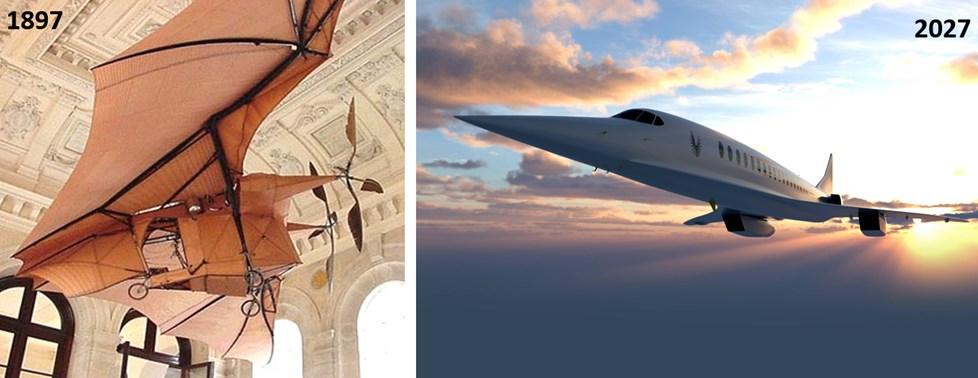
Page 4 THE FUTURE OF FLYING
WHITEHEAD Vs. WRIGHT: FIRST HISTORIC FLIGHT CONTROVERSY
Long-running controversy surrounds Gustave Whitehead and his adventurous journey in 1901. Although there is some proof to back up the assertion that Whitehead piloted his No. 21 aircraft before the Wright brothers made their historic flight in 1903, it is still up for debate among historians and aviation specialists.
Eyewitness accounts and a few historical documents are the primary sources for the defense of Whitehead's flight. Whitehead's alleged flight was reported in very few modern media articles, and only rare witnesses claimed to have seen it.
No clear photographs of the No. 21 plane in flight exist, and many experts believe that the documentation that has survived is inadequate.
The flight of the Wright brothers on December 17, 1903, on the other hand, is welldocumented with pictures, reports from eyewitnesses, and meticulous records. During their lifetimes and even today, their contributions and accomplishments were more broadly acknowledged and accepted.
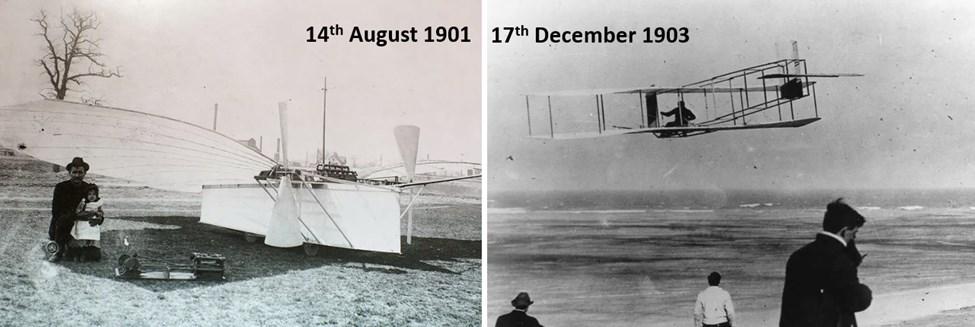
Gustave Whitehead and the Wright brothers both made significant contributions to the growth of early aviation, even though the question of Whitehead's flight is still up for dispute.
But based on the evidence that is presently available, the Wright brothers continue to be widely acknowledged as the first to accomplish a powered, controlled, and sustained flight.
More on the matter on this page: https://en.wikipedia.org/wiki/Claims_to_the_first_powered_flight
“To catch the reader's attention, place an interesting sentence or quote from the story here.” THE FUTURE OF FLYING Page 5
IKARUS OR HEROES?
A distinct set of individuals known as ‘jetpack aviation enthusiasts’ are fervent believers in using a jetpack to fly. Even though using a jetpack involves risks, most enthusiasts approach their pastime with a high level of discipline, training, and safety measures. Some people may view them as being insane because of the risks. A high degree of skill and physical fitness are necessary to use jetpacks safely due to their tremendous power. Enthusiasts practice and get ready for flights for countless hours, frequently with the help of seasoned instructors. Advanced safety gear like headgear, parachutes, and emergency flotation devices are also necessary.

Even with the dangers, many jetpack aviation fans see their pastime as a way to enjoy the rush of flight in a way that is more intimate and immersive than conventional forms of aviation. They are frequently attracted by the feeling of independence and the surge of adrenaline that comes from flying through the air on their own. More on 7 Jetpacks on this video: https://youtu.be/xHGkOQUtlRk?t=14
The general consensus among jetpack aviation enthusiasts is that they are a committed and passionate collection of individuals who are focused on expanding the realm of personal flight potential. While their pastime may not appeal to everyone, it is unquestionably a reflection of the extraordinary human desire to discover and engage with the world in fresh and interesting ways.
Page 6 THE FUTURE OF FLYING
PEDAL TO THE METAL, A RUSH IN THE AIR!
A recent advancement in aviation technology is single-seat electric drones like the ‘Jetson’. They have been created to offer a new form of quick and green personal transit.
An advantage is that it falls under the FAA's lightweight classification, which implies that there is no requirement for a pilot's certificate, but the regulations for that class of aircraft naturally prohibit flights over airports or in populated areas.
The added on is a required training session to make the airborne transport as failsafe and foolproof as possible. The 86 kg aircraft has an aluminum frame and eight electric motors that give it a software-limited maximum speed of 100km/h and a flight time of about 20 minutes.
They use a joystick and throttle to maneuver the craft with a triple redundant flight computer that has a lidar for monitoring the terrain. And you can guess that the trickiest trick is handled by an auto-landing system, which includes a ‘ballistic’ parachute.
Jetson has a maximum ceiling of 450 meters, even though it was designed to spend most of the time flying between 3 and 6 meters off the ground. Even though it is primarily intended for recreational purposes, it is also used to shorten ‘rural’ commute times between communities. Enthusiasts are calling Jetson One “A real l Life Star Wars Landspeeder”.video: https://www.youtube.com/watch?v=FzhREYOK0oo&t=5s

“To catch the reader's attention, place an interesting sentence or quote from the story here.” THE FUTURE OF FLYING Page 7
CHITTY CHITTY BANG BANG …FOR REAL!
Flying cars with folded wings can take off and land on a runway like an airplane. These cars are not VTOLs, which can fly and descend vertically like a drone or a helicopter. Watch 7 of them on this video: https://www.youtube.com/watch?v=dZIpG7hFHEw&t=7s
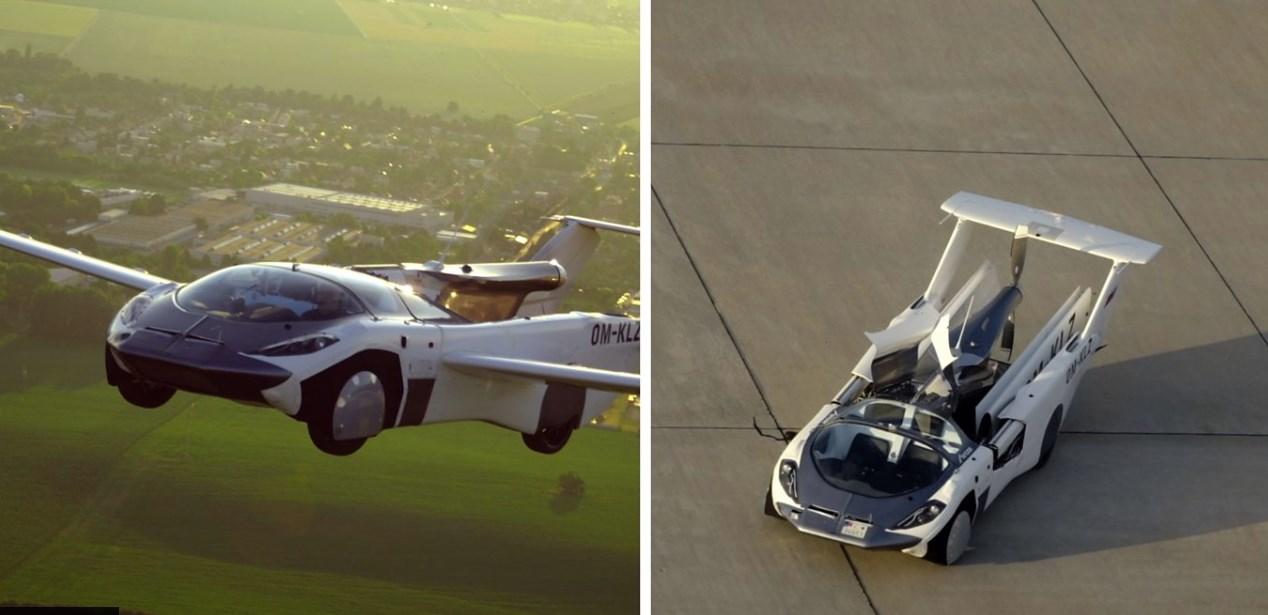
Two American companies, Terrafugia and Aeromobil, are involved in creating roadable aircraft, while the Swedish supercar manufacturer Koenigsegg created a ‘Gemera’ flying vehicle prototype. The hybrid Gemera can switch between driving and flying states very fast thanks to its novel propulsion system.
The Gemera has a 1.6-liter, three-cylinder engine that generates 1700 horsepower when combined with three electric engines. In driving mode, the Gemera has a range of up to 1,000 kilometers and a maximum speed of 400 kilometers per hour.
The folding wings can be expanded to a span of 10.36 meters when in flight. The aircraft can travel at a maximum altitude of 6,000 meters and is propelled by two electric motors that each power one propeller and a ballistic parachute system
Personally, I am very impressed by the Slovakian-based venture Air Car of Klein vision, which has been the first to receive an airworthiness certificate, which is the prelude to first sales. Look at this video of a real 35 minutes flight from Bratislava airport on June 28, 2021. Video at: https://youtu.be/QAnIjwwzupI
Page 8 THE FUTURE OF FLYING
EKRANOPLAN WHO?
The aerodynamic phenomenon known as ground effect is an ‘Ekranoplan’, a form of ground effect vehicle to produce lift and lessen drag that has its origins from the Soviet Union. Today, the name is Wing-In-Ground (WIG) impact vehicles.
WIGs are intended to fly very close to the water's surface, usually at a height of only a few meters, and typically have a very large wing that spans the entire length of the vehicle. The vehicle can accomplish lift more effectively and move at faster speeds than a traditional boat or ship by flying with that ground effect.
WIGs are faster and more efficient than traditional boats and ships, but they also have some drawbacks, such as the fact that they can only be used in regions with shallow water and calm sea conditions. They have not been extensively used yet for commercial purposes as a result, but there is still interest in the technology, and some organizations like USAbased Flying Ship are reopening the market.
Their first WIG vessel iteration is 30–50% more energy efficient than comparable-sized aircraft. With a 500-nautical-mile range (nm) and a 1200kg cargo capacity, the first generation of these engines are entirely electric.
The range and capacity of future versions will be increased to 1000nm and a 2700kg cargo load respectively, by incorporating alternative, electric propulsion technologies. Flying Ship’s goal is to be operate completely autonomously after starting out partially autonomous. Check the video: https://youtu.be/_tuEsvLlYdc

“To catch the reader's attention, place an interesting sentence or quote from the story here.” THE FUTURE OF FLYING Page 9
DRONE CARGO, NO PILOT
Long-distance cargo drones are made to move merchandise over great distances, frequently mostly through inaccessible or hard-to-reach regions.
The Sabrewing Rhaegal-A is an illustration of a long-distance cargo drone. It has a VTOL capability with a cargo capacity of 635kg and a range of 4,000km.
Another development of cargo drones for long-distance transportation is produced in Europe by the Bulgarian firm Dronamics. The ‘Black Swan’ is a fixed-wing drone that can carry goods up to 2,500km.
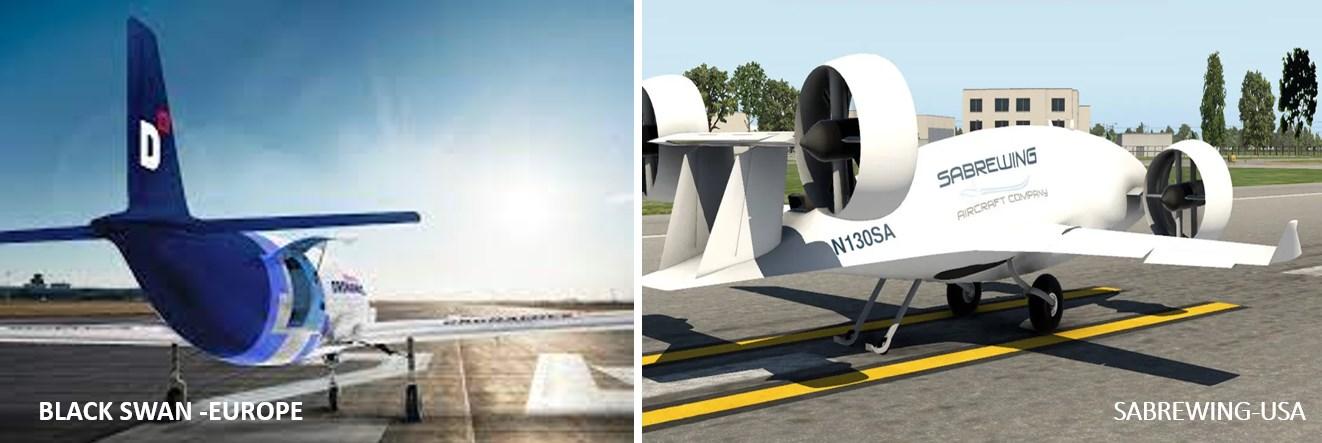
Fully autonomous drones like the Black Swan are made to lift off and land on regular runways. Its wingspan is 8.5 meters long, and its payload is 350kg. Two electric motors propel the drone, which cruises at a speed of 200kph.
Being able to transport cargo pods that can be easily filled and unloaded using regular forklifts is one of the Black Swan's distinctive characteristics. The drone can rapidly switch between various payloads thanks to the ease with which the cargo pods can be changed.
Additionally, Dronamics has created a unique ground control center that enables users to supervise and manage the drone from a distance. In order to deliver real-time information and manage the drone, the ground control center combines satellite and cellular networks.
Video: https://www.youtube.com/watch?v=JddkES9S8jI&t=38s
While the two competing business have carried out a number of effective test flights, there is are still more work to do prior to commercialization.
Page 10 THE FUTURE OF FLYING
VERTIGO IN VERTIPORT
For the burgeoning urban air mobility (UAM) sector, which seeks to offer quick and effective transportation options within urban areas using electric vertical takeoff and landing (E-VTOL) aircraft, vertiports are a crucial piece of infrastructure. These aircraft may operate in highly populated regions without conventional runways since they are built to take off and land vertically. They can take off, land, and recharge their electric batteries at vertiports, which are ground-based infrastructure. Vertiports are created to be modular and expandable, enabling quick deployment in crowded metropolitan locations.
They may be erected as standalone structures, on top of already-existing buildings, or as a component of a larger transportation hub. Vertiport technology must advance for UAM model to succeed to gives passengers a secure and practical means to board E-VTOL aircraft.
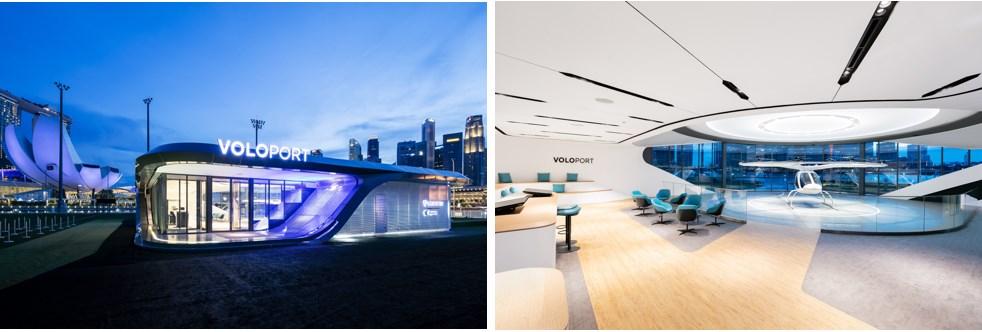
Vertiports can support a variety of other uses in addition to the transportation of people, including the delivery of cargo, the provision of emergency medical care, and search and rescue activities.
For cities and developers, the building of vertiports poses potential and difficulties. They can transform transportation, lessen traffic, and cut carbon emissions all at the same time. On the other hand, there are worries regarding safety and noise pollution. See the VOLOPORT
SINGAPOUR VIDEO at: https://vimeo.com/524911619
Despite these obstacles, the UAM industry is expanding quickly, and vertiport development is positioned to be a key factor in the success of this new sector. Soon vertiports will become a typical new sight in urban landscape.
“To catch the reader's attention, place an interesting sentence or quote from the story here.” THE FUTURE OF FLYING Page 11
Believers or doubters?
Without a question, the development of vertiports is a topic that has generated a lot of discussion and controversy within the transportation sector.
As UAM has a lot of promise, some experts think that vertiports are a crucial component of this new kind of transportation.
They contend that vertiports and E-VTOL aircraft have the potential to ease traffic congestion, increase mobility, and offer more environmentally-friendly transportation options.
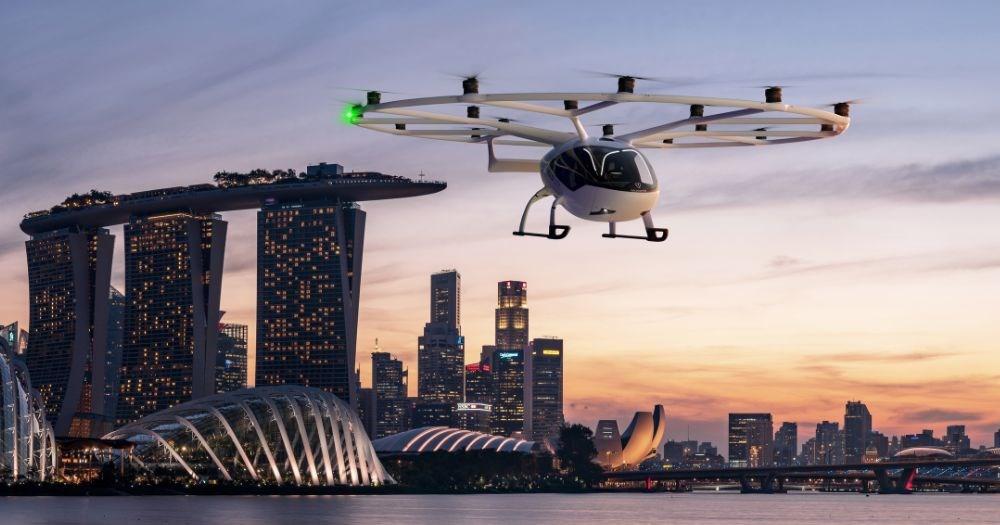
However, there are also a lot of people who are less optimistic about the future of vertiports and UAM in general.
They highlight several difficulties, such as the need for significant infrastructure investment, safety issues, and noise pollution. Overall, it is still difficult to count whether there are more proponents of vertiports or opponents of them.
However, it is evident that the construction of these facilities is a topic of intense attention and discussion within the transportation sector, and this is likely to be the case for some time to come.
Page 12 THE FUTURE OF FLYING
E-VTOL GROWTH MARKET OR BUST?
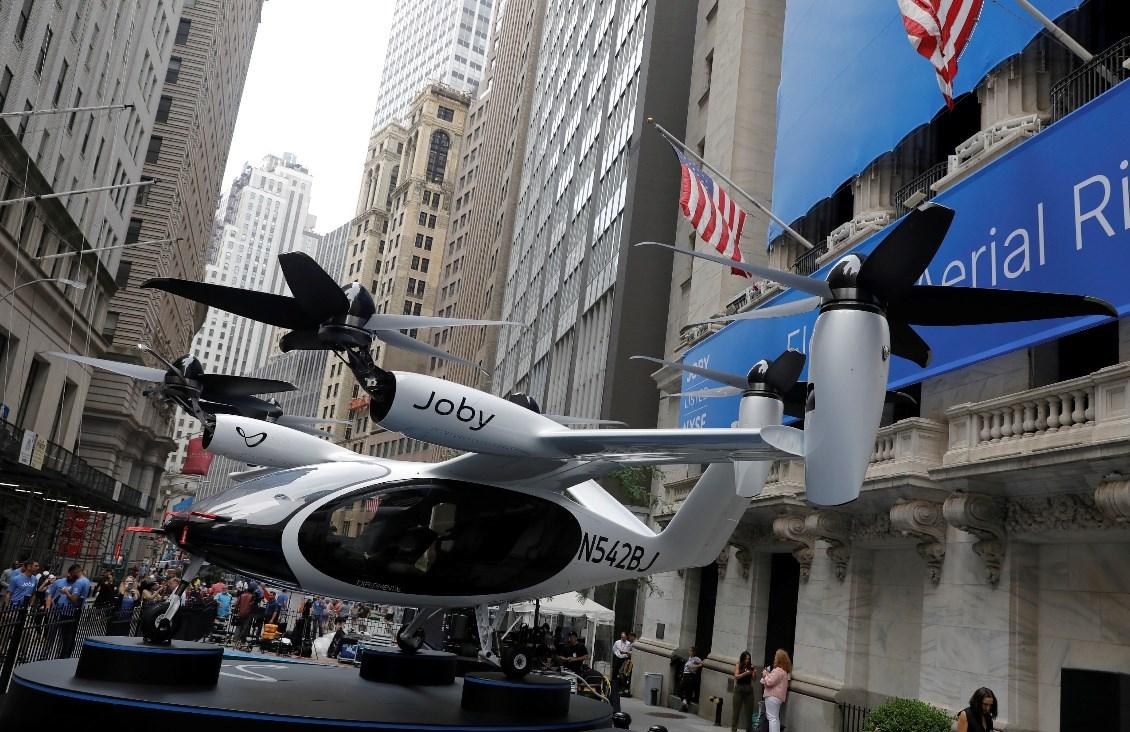
According to recent research from industry experts – Revolution Aero – E-VTOL aircraft orders increased by 40% last year and are expected to grow further this year. Hybrid and electric VTOL aircraft are expected to drive growth.
According to its data, aircraft pre-orders increased to 2,876 in 2022 from 2,056 in 2021, with an upward trend of 90% year-on-year going to E-VTOL aircraft.
But the research emphasizes that 2023 might be a make-or-break year for many start-ups and asserts that it is increasingly likely that the majority of investment and finance would come from strategic investors rather than venture capital, including governments and corporations.
In Dublin, on April 26, 2023, a conference will concentrate on the potential and problems faced by businesses engaged in advanced air mobility, autonomous aviation, electric and hydrogen-powered aircraft, vertiports, and infrastructure.
Since the majority of upcoming developers are start-ups, the usual slowdown in orders will occur as aircraft OEMs lock in final designs before certification and commercial entry, which can be predicted for mid-decade. In that case, the future of air mobility space is not for now.
Page 13 THE FUTURE OF FLYING
Joby aviation on their NYSE listing day, 11,8,2021
AIR TAXIS: READY TO BE FIRST, WHATEVER?
United Airlines and Archer Aviation have announced intentions to operate the first air taxi route in Chicago (March 15, 2023).
The route will run between Vertiport Chicago, the biggest vertical aircraft takeoff and landing facility in the USA today, and O'Hare International Airport (ORD). Using Archer's Midnight model, passengers will reach and depart ORD in about ten minutes as opposed to more than an hour with a car. Video https://youtu.be/h95jtCArSyA
Combined, Archer's E-VTOL design, manufacturing strategy, and engineering know-how clearly have the ability to change how people commute within major metropolitan cities in USA.
According to United Airlines, taking one of Archer's E-VTOLs between Hollywood and Los Angeles International Airport (LAX) could cut CO2 emissions by as much as 50% per passenger.
After Chicago, Los Angeles is the second place where Archer intends to launch its fleet and, coincidentally, one of United's largest hubs.
The autonomous two-seater demonstrator aircraft completed its first hover test on December 16, 2022.
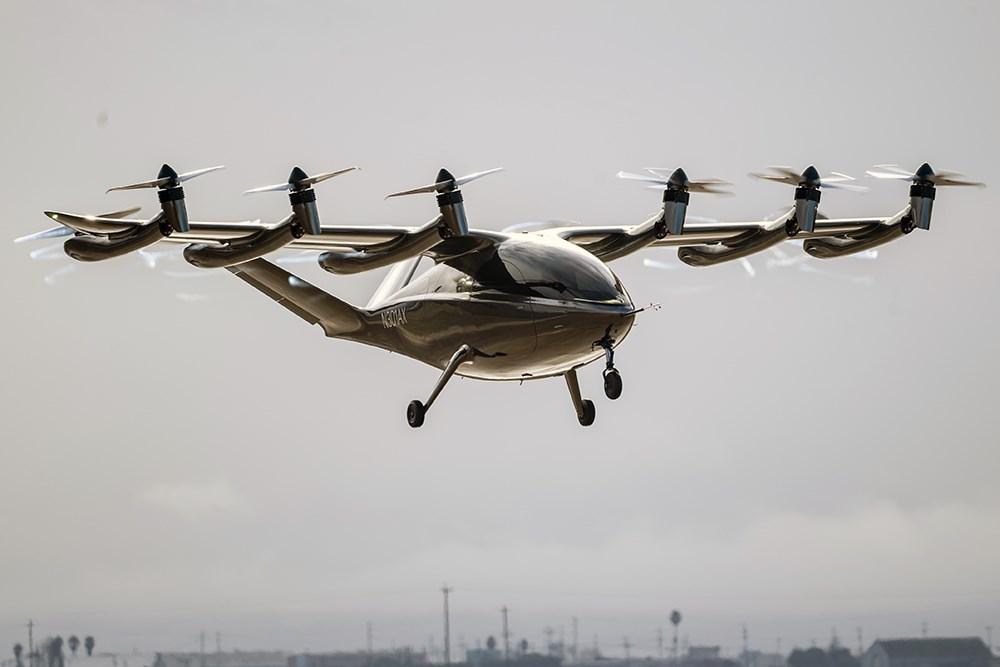
“To catch the reader's attention, place an interesting sentence or quote from the story here.” THE FUTURE OF FLYING Page 14
ELECTRIC OR HYDROGEN FOR LIGHT AND MID-SIZE AIRCRAFT?
There are not many technology adventurers in light and mid-size aircraft production that are just companies on the green propulsion market. Two of them are Pipistrel for electricity power and ZeroAvia for hydrogen-power.
When the Pipistrel company's prototype Taurus Electro aircraft took to the skies for the first time in October 2007, it was the first world event of an electric flight.

It had an electric engine with a 35kW output and a lithium polymer battery pack, both of which propelled the two-seat electro-glider.
That accomplishment helped to position Pipistrel as a pioneer in the field of electric aircraft and the successful flight served as a significant turning point in the history of these machines.
Since then, the company has continued to develop and improve its electric aircraft technology. See: https://youtu.be/txBBl8Y1lHg
Pipistrel also introduced a number of models that are currently in production and in use all over the world, including the four-seat Panthera Hybrid and the two-seat Alpha Electro, both of which have an hour's worth of range and 60kw electric motors.
“To catch the reader's attention, place an interesting sentence or quote from the story here.” THE FUTURE OF FLYING Page 15
ZeroAvia's hydrogen fuel cell-powered prototype aircraft has flown successfully several times. The company successfully finished the first flight of a six-seat Piper M-class aircraft propelled by a hydrogen fuel cell in September 2020. The journey, which took place at their R&D center in Cranfield, United Kingdom, lasted roughly 20 minutes.
Since that time, ZeroAvia has flown its hydrogen-powered prototype aircraft on a number of additional test flights, including a 400km journey. In order to ultimately market hydrogen -powered aircraft, the company is continuing to develop and test its technology.

A variety of hydrogen-powered airplanes are being developed by ZeroAvia, including a 10- to 20-seat model that it intends to release by 2024. A number of investors have made sizable investments in the business, including Amazon's Climate Pledge Fund, which has backed ZeroAvia's goal to decarbonize mid-size aircraft.
Overall, ZeroAvia is developing hydrogen-powered aircraft at a significant pace, and its successful test flights show the potential of this technology for the aviation sector.
https://youtu.be/cp8MoFaaKy8 First flight on January 19, 2023, of a 19-seat Dornier
“To catch the reader's attention, place an interesting sentence or quote from the story here.” THE FUTURE OF FLYING Page 16
AIRBUS Vs BOEING: A BRUISED RIVALRY
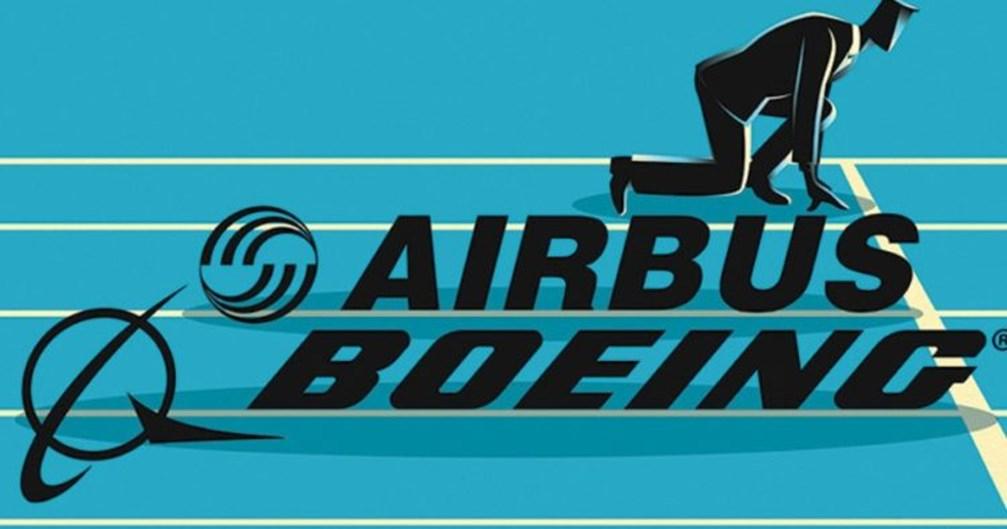
As the two majors in the commercial aviation industry, Boeing and Airbus have been competing for market dominance for many years. This competition's impact on product development and invention has resulted in significant advancements in aviation technology, safety, and effectiveness.
Both Boeing and Airbus offer a selection of commercial aircraft that are appropriate for different market segments and customer needs. Boeing is known for its 737, 747, and 787 models, while Airbus provides the A320, A330, and A380 aircraft.
Both manufacturers are dedicated to producing high-quality aircraft that meet the needs of their clients, but one has unique advantages and capabilities that the other does not.
Despite the COVID-19 epidemic's challenges for the industry, Boeing and Airbus persevered in demonstrating adaptability and resilience in the face of changing market conditions.
Both makers have the potential to have a big impact on how commercial aviation develops in the near future.
Due to increasing demand for air travel in developing countries and technological advancements that make air travel more accessible, effective, and ecologically friendly, the industry is expected to continue to grow over the coming years.
“To catch the reader's attention, place an interesting sentence or quote from the story here.” THE FUTURE OF FLYING Page 17
From 2020, Airbus has eclipsed Boeing in terms of orders for commercial aircraft. According to information from the companies' annual reports, Boeing received 184 commercial aircraft orders in 2020 compared to 566 orders for Airbus. In addition, Airbus had 7,184 orders for airplanes in its backlog as of January 2021, compared to 4,223 for Boeing.

This is primarily because Boeing’s sales and delivery figures were negatively impacted when the Boeing 737 MAX was grounded following two fatal incidents in 2018 and 2019. Both companies have been working to recover from the pandemic's impacts on the industry, and it is expected that they will continue to compete for market share going forward.
Approximately 75% of all commercial airplane orders were placed with Airbus in 2021, compared to 25% with Boeing. But it is important to remember that these figures can vary from year to year and are affected by a number of factors, such as market conditions, geopolitical situations, and the efficiency of specific aircraft models.
In conclusion, the competition in commercial aviation between Boeing and Airbus has helped the industry by promoting innovation and the development of improved aircraft. Both manufacturers are well-positioned to play a major role in the development of commercial aviation, and they will continue to do so.
“To catch the reader's attention, place an interesting sentence or quote from the story here.” THE FUTURE OF FLYING Page 18
CHINA AIRCRAFT INDUSTRY IS FAR FROM BEING ON PAR
Unlike the space sector (ref Futurology chronicle no 21- Space Race 2.0) China depends heavily on the aviation industry as a means of transportation, making it more than just a source of national pride.
According to the World Bank, China's passenger air traffic increased from 62 million passengers in 2000 to 660 million passengers at its peak in 2020 (before the COVID pandemic).
China has become a significant buyer of Western-made aircraft, growing rapidly from accounting for only 2% of global airliner production in 2000, according to manufacturer data. By 2020, it consumed 25% of the global airliner output, the year with the highest import volume.
Today, the ARJ21 regional jet, the C919 narrow-body passenger airliner, and the anticipated CR929 wide-body are all Chinese-made commercial transportations aircraft that rely substantially on imported Western technologies and systems.
China hopes to eventually produce entirely Chinese jets by developing domestic alternatives for all imported parts.
But the weakest link in China's civil aviation ambitions is the engines. The development of airframes, aircraft systems, and technologies is challenging, and the hurdles on new entry for jet engines are very high.
Only three manufacturers – General Electric (GE), Raytheon/Pratt & Whitney in the United States and Rolls Royce in the United Kingdom – manufacture commercial jet engines. Safran, a French company, collaborates with GE on the CFM model.
The best-case scenario for China's aerospace ambitions, with or without Western sanctions, is a subpar, domestically produced engine available in the mid-2030s.
To power 100% of Chinese jetliners, they would have inferior reliability due to a lack of years of testing, higher fuel consumption and operational expenses, with an unsecured spare parts product support.
Ever since COMAC's ARJ21 program got underway in 2002, the government has lavishly invested in the growth of the sector. Sash Tusa, an aerospace, and defense analyst at Agency Partners, calculated that during the previous 20 years, China has invested at least $67 billion in its aircraft programs. It is an industry that has failed to take off both metaphorically and literally, but today employs tens of thousands of people.
Funding to terminate these programs would total more than a few billion dollars, and additionally, it would mean that China in the interim would be forced to continue buying Boeing’s and Airbus’ Western jets.
“To catch the reader's attention, place an interesting sentence or quote from the story here.” THE FUTURE OF FLYING Page 19
It is not essential nor desirable for China and the West to decouple their aviation sectors. Losing this significant growing market would be tremendously negative for the entire aviation sector worldwide, but it would also have a very negative impact on China's economy.
A very unsafe ending would be the result of an unreliable air transportation system, based on an aging fleet of existing planes with highly risky levels of sustainability and safety. In contrast to their ambitious and well managed space program, the aviation industry's aim for autarky remains today and for a long time an unattainable technological goal.
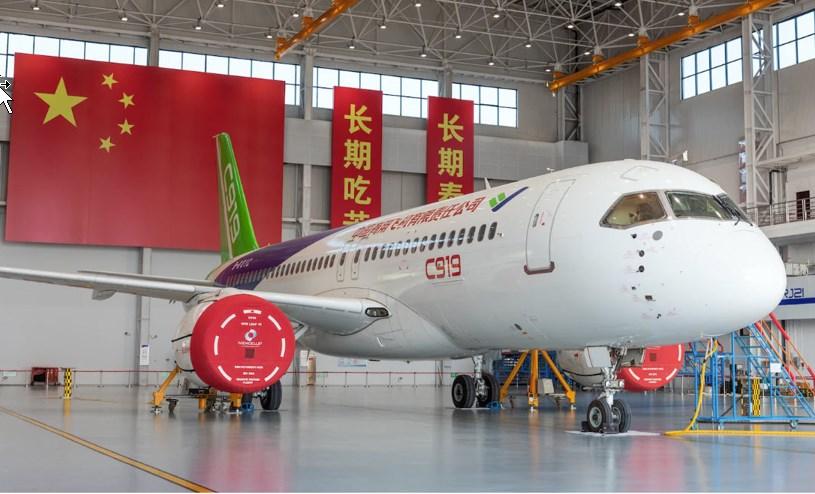
“To catch the reader's attention, place an interesting sentence or quote from the story here.” THE FUTURE OF FLYING Page 20
COMAC C 919 Narrow-Body at the aviation industry conference October 20, 2021
EASYJET JOINS FIRMLY THE HYDROGEN PROPULSION CAMP
The British carrier EasyJet is supporting the use of hydrogen green technology to reduce flight emissions and ultimately to achieve zero-carbon emissions. Since April 2022, it has supported the development of GKN Aerospace’s Hydrogen Combustion (H2JET) and Hydrogen Fuel Cell (H2GEAR) technology, including exploring the options for flight demonstration.
In opposition to other European carriers that are primarily focused on investing in alternative jet fuels made from synthetic fuels and SAF to only reduce aircraft carbon emissions, EasyJet wishes to make sure that any investments in clean, emission-free technologies like hydrogen are not offset by investments in SAFs. According to EasyJet, its short-haul aircraft fleet of the future will be ultimately hydrogen-powered.
Many airlines recognize the potential hydrogen fuel has to offer in terms of decarbonizing the aircraft industry, but there are still obstacles to be removed before hydrogen planes can truly be considered the future of short-haul travel.

For example, there is less room for cargo and passengers because hydrogen needs more space and storage than conventional fuels, which means that fuel cells are going to have to be miniaturized. As hydrogen gas burns hotter than kerosene, aircraft must be built to endure intense heat. Airports will need to be modified because new facilities for fueling and storing hydrogen will be needed to support aviation.
Despite these challenges, there are no limitations apart from the renewable energy to produce it, and the cherry on the cake is it that is has three times the kerosene density for the same weight.
“To catch the reader's attention, place an interesting sentence or quote from the story here.” THE FUTURE OF FLYING Page 26
Illustration of H2Gear of GKN Aerospace
GREENPEACE NEW TARGET: BUSINESS JETS’ SOARING POLLUTION
Between 2020 and 2022, Europe private jet travel volume increased by 855%, with a corresponding alarming increase in the level of emissions.
According to a February report by CE Delft, a Dutch environmental consultancy hired by Greenpeace to survey over 572,000 private flights that were registered in Europe last year, the result was more than 5.3 million metric tons of carbon emissions.
Flights almost tripled between 2020 and 2021, while pollutants more than quadrupled. And then flights rose 1.5 times more between 2021 and 2022, and emissions doubled again. The 27 EU member states, Norway, Switzerland, and the UK are all represented in the study's data collection. The UK, France, and Germany produced the most carbon emissions from private aircraft in 2022.
According to The Guardian, the UK was the worst offender last year, recording 90,256 private aircraft flights – or one private flight every six minutes – that released over 500,000 metric tons of CO2.
Last year, flights between London and Nice, Paris and Geneva – both of which are serviced by high-speed trains – and London and Paris were the most popular.
However, across all three years, it was short-haul trips covering just 251 to 500km that were the most prevalent. Nearly a quarter of all private trips in 2022 were for short distances.
Europe's elites are failing to consider less polluting travel options, which makes these reductions difficult to maintain as economic activity returned to pre-pandemic levels. This makes it more difficult for the EU to achieve its goal of cutting pollution by 55% by 2030 compared to 1990 levels. In a news release on March 30, 2023, Greenpeace asked for a ban on private planes for short-haul flights when trains could be used in their place as part of a fair strategy to combat climate change.
See: Private jet emissions quadrupled during 2022 World Economic Forum | Greenpeace UK Private Jets Investigation - Politics.co.uk
“To catch the reader's attention, place an interesting sentence or quote from the story here.” THE FUTURE OF FLYING Page 27
…………………………
In 2023, the European Commission gave France permission to end domestic flights under 2.5 hours, and in the same year Germany increased its tax on short-haul flight tickets. Spain has stated that it wants to ban all short-haul flights by the year 2050.
Private Jet Emissions report card by the digits (Source Quartz)

50x: How much more polluting private jet flights are compared to trains
5–13x: How much more polluting private jets are compared to passenger commercial flights
2: Metric tons of CO2 that private jets produce per hour, on average equivalent to consuming 4.6 barrels of oil
1%: World population that produces about 50% of commercial aviation emissions
2%: Global energy related CO2 emissions produced by all the aviation sector (2021)

“To catch the reader's attention, place an interesting sentence or quote from the story here.” THE FUTURE OF FLYING Page 28
-LAST MINUTEAMSTERDAM HUB TO HALT NIGHT FLIGHTS AND BAN PRIVATE JETS TO CUT CO2
Schiphol Airport in Amsterdam has a lot to be proud of, including the finest direct flight connectivity in all of Europe, an easy-to-navigate terminal layout, and an underground railway station that connects it to important European cities. Now, a plan to limit capacity in order to reduce noise threatens to lessen one of Europe's important centers' appeals.
The decision has sparked a legal battle between the airline sector and the Dutch government, which wants to reduce Schiphol's annual flight capacity by up to 12% to 440,000 flights by 2024. Airlines opposed to the move, including national carrier KLM Group, claim that the limitation violates international law, goes against policy stability, and hurts connectivity.
When the modifications take effect in the following two to three years, aircraft will no longer depart from the Amsterdam center between the hours of midnight and six in the morning, the airport announced on Tuesday. There won't be any flights between midnight and five in the morning.
The actions are a part of a campaign to lower carbon pollution and noise in accordance with the Paris Climate Agreement. According to the airport, private aircraft and small business aviation generate a "disproportionate" quantity of noise and CO2 pollution and will be outlawed. Additionally, Schiphol is abandoning preparations for a second runway.
The Dutch government had previously suggested reducing the airport's annual capacity by as much as 12% to 440,000 flights by 2024.
This proposal is currently being contested in court by airlines. The new regulations, which will result in 10,000 fewer night flights each year, came after that proposal.
CEO of Royal Schiphol Group Ruud Sondag said, "Our decisions may have significant effects on the aviation sector, but they are necessary. This demonstrates our seriousness” .
“To catch the reader's attention, place an interesting sentence or quote from the story here.” THE FUTURE OF FLYING Page 29
………………………..
ENGINES: SAME FACE TO FACE USA Vs EUROPE
GE (USA) and Rolls Royce (UK) are facing each other in a very similar competition to Boeing and Airbus.
They are preferred engine suppliers for their respective fleets but many airlines are agnostic and you can find Airbus with GE engines and vice versa Boeing with RR engines. This depends a lot of the aircraft flight plan and their general design.
The GE9X engine: it is twin-annular pre-swirl (TAPS) combustor, a feature of the GE9X engine's architecture, which enhances fuel efficiency and lowers emissions by offering improved fuel and air mixing.

The engine is made to fit the largest Boieng commercial aircraft, such as the Boeing 777X, with a thrust range of 45 tons to 60 tons.
To decrease weight and increase durability, the GE9X engine uses cutting-edge materials like ceramic matrix composites (CMCs) and additively manufactured components.
The GE9X engine's advanced architecture and materials are intended to make it 10% more fuel-efficient than its forerunner, the GE90 engine.
“To catch the reader's attention, place an interesting sentence or quote from the story here.” THE FUTURE OF FLYING Page 30
On Rolls Royce side, the advanced design of the ULTRAFAN engine includes a geared fan system. As a result, the fan can work at a different speed and is no longer connected to a low-pressure turbine, which improves overall efficiency.

The engine is made to be appropriate for a variety of aircraft, with a thrust range of 12 tons to 45 tons.
The engine uses cutting-edge production processes like 3D printing as well as cutting-edge materials like lightweight composites and ceramic on par with GE.
Due to its advanced architecture and materials, Rolls Royce says that the ULTRAFAN engine will be 25% more fuel-efficient than its current engines.
“To catch the reader's attention, place an interesting sentence or quote from the story here.” THE FUTURE OF FLYING Page 31
It is difficult to directly compare the most recent aviation engine developments between the Rolls Royce ULTRAFAN and the GE’s GE9X because the two companies are pursuing different technical trajectories and have different priorities in terms of their engine designs.
However, both are designed to be significantly quieter than their current engines line up, which will help reduce noise pollution around airports.
In conclusion: the GE9X is the largest and most potent commercial aircraft engine worldwide today. The GE9X uses cutting-edge technologies like 3D-printed parts, CMCs, and sophisticated cooling systems in a extremely efficient design.
In the other camp, the Rolls Royce ULTRAFAN engine uses also lightweight composites and geared fan systems to increase efficiency and lower emissions. But compared to the GE9X, the ULTRAFAN is made to be more compact and adaptable, and it places more of an emphasis on minimizing noise pollution.
Additionally, both businesses are focusing on creating engines that are compatible with environmental fuels like SAF today and hydrogen in the near future.
“To catch the reader's attention, place an interesting sentence or quote from the story here.” THE FUTURE OF FLYING Page 32
…………………………
IS THERE A PILOT IN THE PLANE?
Major and minor aircraft companies are working on prototypes and systems in the study and development of AI software for autonomous aircraft. The following technical terms are used in the algorithm and AI software creation process for autonomous aircraft:
Computer vision: To sense and understand their surroundings, autonomous aircraft heavily depend on computer vision algorithms. The area of AI known as computer vision is concerned with giving computers the ability to decipher and comprehend visual data from their surroundings.
Machine Learning: The creation of AI software for autonomous aircraft makes significant use of machine learning algorithms. In order for algorithms to learn and become more effective over time, it entails training them on sizable datasets of real-world data.
Sensor fusion: To detect their surroundings, autonomous aircraft use a variety of sensors, including cameras, radar, and lidar. Sensor fusion is the process of combining data from various sensors to produce an environment model that is more precise and trustworthy.
Control Systems: The software elements in charge of regulating the behavior of the airplane are known as control systems. To decide how the aircraft should move and react to its surroundings, these systems use data from sensors and other sources.
Fault Tolerance: Fault tolerance is a consideration in the construction of autonomous aircraft systems from the point of origin. This indicates that they are built to continue working even if specific parts or modules malfunction suddenly.
Simulation and Testing: Constant simulation and testing go into the creation of AI software for autonomous airplanes. Prior to testing on actual aircraft, these simulations are used to evaluate how the software behaves in a variety of situations to spot possible issues.
Cybersecurity: To guard against possible cyberattacks that could jeopardize the safety and security of the aircraft, autonomous aircraft software is also developed with high-end cybersecurity benchmark.
“To catch the reader's attention, place an interesting sentence or quote from the story here.” THE FUTURE OF FLYING Page 33
You will agree that this is is still a rather complex and highly technical process. The creation of AI software for autonomous airplanes requires a simultaneous knowledge of computer vision, machine learning, control systems, sensor fusion, fault tolerance, simulation, prototype testing, and cybersecurity that both majors are mastering.
The first test flight of Boeing's autonomous passenger air vehicle prototype was implemented in 2019.
Earlier, in 2016, Airbus was working on developing autonomous aircraft technology. And in 2018, it successfully achieved the first test flight of its prototype autonomous air taxi. Bell and Rolls Royce are both creating autonomous aircraft technology. Bell is doing so on the US side and Rolls Royce on the European side.
Even though the idea of flying without a captain may be a little unsettling, we can all find solace in the fact that the future of autonomous aircraft technology is in capable hands. After all, AI technology makes split-second choices based on a vast amount of data, does not get tired or need to go to the bathroom. So the next time you fly without a pilot, just lay back, unwind, and take it all in. Do not be alarmed if you spot a robot in the cockpit, it is presumably the co-pilot, not the pilot. Remember the 1980 movie?

“To catch the reader's attention, place an interesting sentence or quote from the story here.” THE FUTURE OF FLYING Page 34
SUPERSONIC FLIGHT IS BACK
It is 76 years since humans broke the sound barrier. Capt. Charles E. Yeager, flying a Bell X-1 rocket-powered experimental aircraft, became the first person to surpass the speed of sound in level flight on October 14, 1947.

He did so with little difficulty, overcoming an invisible barrier that was previously thought to be epic for the development of aircraft and to modern aircraft structures.
After British Airways and Air France stopped the Concorde flights program, the central question is whether there a market for supersonic commercial jets with so much emphasis on reducing carbon emissions?

“To catch the reader's attention, place an interesting sentence or quote from the story here.” THE FUTURE OF FLYING Page 35
1985 - Four of the six British Airways Concorde in formation
For supersonic flight, will 2023 finally see the results of decades of NASA research?
The X-59 is a key component of NASA's Low-Boom Flight Demonstration Mission, which aims to develop and test systems that can reduce the sonic boom produced by supersonic aircraft.
Because of the noise effects, US regulators have prohibited overland civilian supersonic flight for decades But NASA believes its research will enable supersonic flight over land.
In 2018, NASA gave Lockheed a $247.5 million contract to design, develop, produce, and fly test the X-59 as part of the program.
According to NASA, the aircraft's attributes, such as its long, skinny fuselage and distinctive structural parts, will cause a sonic boom that is perceived to be 75dB on the ground, which is similar to distant thunder.
By contrast, the perceived boom of Concorde was measured at 125db.
At its Skunk Works facility in Palmdale, California, Lockheed is building the single-pilot X-59, which is propelled by a 22,000lb-thrust (98kN) GE Aviation F414-GE-100. The jet flies at speeds of up to Mach 1.4 while cruising at 17km in space.
NASA wants to utilize the X-59 to conduct "community flights,” during which it will fly over the country and measure how loud the sonic boom is and whether or not people on the ground can hear it.
NASA plans to give US regulators the X-59 noise data ASAP before the final test is done.
NASA is evidently encountering resistance. Public Workers for Environmental Responsibility, a non-profit organization, has encouraged NASA administrator Bill Nelson to investigate the X-59 program in light of "climate consequences" in a letter dated January 12, 2023.
The letter states that supersonic aircraft consume several times more fuel and emit many times the amount of pollution as contemporary commercial flights.
Using tax money to “allow higher-polluting aircraft" is "difficult to reconcile," the letter continues, with NASA's overarching objective of cutting emissions.
“To catch the reader's attention, place an interesting sentence or quote from the story here.” THE FUTURE OF FLYING Page 36
In response, NASA recognized that there are several barriers to making commercial supersonic flight a reality, including the long-term ambition of tackling difficulties such as pollution and fuel use. Yet, the agency's priority right now is only on X-59 flights supporting the QUEST mission.
NOTE: The NASA QUEST (Quality Education for Students and Teachers) program is an educational program developed by NASA that aims to promote science, technology, engineering, and math (STEM) education in schools across the United States. The overall goal of the NASA QUEST program is to inspire and engage students in STEM learning by connecting them with NASA scientists, engineers, and educators. Through this program, students can learn about a wide range of topics, such as Earth science, space exploration, and aeronautics.

A Cover up or a real argument?
“To catch the reader's attention, place an interesting sentence or quote from the story here.” THE FUTURE OF FLYING Page 37
BOOM: A COMMERCIAL NEW ADVENTURE
Despite these difficulties, some businesses are actively engaged in the development of supersonic aircraft.
The Overture, a supersonic airliner being developed by Boom Supersonic, is intended to travel at speeds of up to Mach 2.2 (roughly 1,700mph or 2,700km/h), which is more than twice as fast as current passenger planes.
The Overture will be able to travel from New York to London in just over three hours as opposed to the seven or more hours that a subsonic aircraft currently needs to do so. It is designed to accommodate up to 88 passengers.
Three J85-15 engines, which are more fuel-efficient – with SAF fuels planned for the moment – and quieter than earlier supersonic aircraft engines, will power Overture. Advanced aerodynamic materials and technologies will also be used on the aircraft to increase efficiency and reduce drag.
Significant funding for Boom Supersonic has come from a number of sources, including venture capital firms and governmental organizations.
Airlines like United Airlines, American Airlines and Japan Airlines have also placed early orders for the firm's supersonic aircraft.
Currently in the development stage, test flights for Overture are expected to start in 2024, and commercial service will likely follow prior to 2030.
Overall, the Boom Supersonic program is an exciting advancement in the field of aerospace engineering and has the potential to completely change the way people travel by lowering the cost and increasing the effectiveness of supersonic travel. However, the program must also overcome significant technical, governmental, and financial obstacles, and serious environment issues. How well it does so in the coming years will determine how successful it could become.
Beautiful on paper, it is under watch as climate change preoccupations has modified the paradigm. Innovation just for the sake of innovation is not acceptable anymore. Do better Gentlemen to keep us excited about aviation modernism.
“To catch the reader's attention, place an interesting sentence or quote from the story here.” THE FUTURE OF FLYING Page 38
………………………..


catch the reader's attention, place an interesting THE FUTURE OF FLYING Page 39
“To
Overture Supersonic model – Boom Aircraft – 2023
CHINA JOIN THE CIVIL HYPERSONIC RACE
In 4 hours, can I get from Shanghai to New York? Flying aboard a hypersonic spacecraft solves the issue. With the creation of a passenger-carrying aircraft that can soar through the air at one mile per second, or more than double the speed of Concorde, Beijing-based Space Transportation (known as Lingkong Tianxing in China), hopes to make this possibility a reality.
The company has unveiled an animated promotional video in which passengers board a 12-seat space plane that is tucked behind an aerodynamic structure in the shape of a delta, flanked by two mammoth booster rockets

https://www.spacetransportation.com.cn/welcome.html
According to the website for Space Transportation, the business plans to launch its first suborbital space tourism test flight in 2025 and a "complete full-scale global hypersonic vehicle flight by 2030."
If achieved, this project will be the personification of China's ambitions to straddle the potentially lucrative niches of hypersonic point-to-point flight for business passengers. It is supported by important participants in the Chinese financial scene with an injection of more than $80 million in funding.
The spacecraft is launched vertically into space, and after it reaches cruise altitude, it separates from its boosters and begins to skim the edge of space at a speed of 7,000 Km/h (Mach 7.2). It then uses a tripod-style undercarriage to land vertically at its target.
Although it will be some time before hypersonic flying is available for commercial planes, the concept is already being profited from. Whoever can use it more efficiently first at this moment will win.
“To catch the reader's attention, place an interesting sentence or quote from the story here.” THE FUTURE OF FLYING Page 40
CIVIL HYPERSONIC: NOT YET ON THE CARDS
SABRE is a hypersonic air-breathing rocket motor developed by Reaction Engines, a UKbased business. A novel class of hypersonic vehicles that could travel at speeds of up to Mach 5 (6,100 km/h) or higher are made possible by the SABRE engine.
Because it blends the fuel efficiency of a jet engine with the force and speed of a rocket engine, the Sabre engine is exceptional.
The engine is built to propel through the atmospheric air at up to Mach 5 and then transitions to a rocket mode to reach even higher speeds. This would make hypersonic travel possible without the use of conventional rocket fuel, which would increase efficiency and lower costs compared to earlier hypersonic technologies.
Both the UK government and commercial investors like Boeing and Rolls Royce have contributed significantly to Reaction Engines' development of its technology. Additionally, the business has partnered with a number of aerospace firms, such as BAE Systems, Boeing, and Rolls Royce, to improve its technology.
The SABRE Pre-cooler Test Program is a ground-based demonstrator for the SABRE engine that the company is presently developing. The program entails putting the engine's heat exchanger technology, an essential part of the air-breathing system, to the test.
Part of the European Union-funded Long-Term Advanced Propulsion Concepts and Technologies (LAPCAT) is a larger hypersonic undertaking that Reaction Engines has in addition to the SABRE engine. A hypersonic airplane that could travel from Europe to Australia in under four hours or from Europe to New York in under an hour is the goal of the LAPCAT project.
Additionally, a number of aerospace firms, such as BAE Systems, Boeing, and Rolls Royce, have backed the LAPCAT initiative.
In general, the LAPCAT project is a bold and forward-thinking effort to create the technology required for hypersonic travel. The project emphasizes the potential for this technology to revolutionize future air travel, despite the substantial technical and regulatory challenges connected with hypersonic flight.
Supersonic flight will come first though hypersonic will be still under watch by the defense sector. So, no wild expectations for the moment, and let’s keep calm on supersonic for the time being.
“To catch the reader's attention, place an interesting sentence or quote from the story here.” THE FUTURE OF FLYING Page 41
………………………..
“To catch the reader's attention, place an interesting sentence or quote from the story here.”

THE FUTURE OF FLYING Page 42
HVX hypersonic project powered with Aerion “SABRE” engines
WILL WE STILL BE FLYING IN 20 YEARS?
There are more hostile actions against flights, so much that airlines are revising all their plans post-pandemic recovery.
The ‘flygskam’ (‘shame of flying’) movement, which was started in Sweden in 2018, appears to be spreading in favor of ‘tagskryt’ or ‘the pride of riding a train.’
For some, climate change is "airplane bashing," while for others, it is a very serious and divisive, impassioned topic.
Air traffic growth predictions could be halved if the flygskam rises, according to a 2019 poll by the Union of Swiss Banks: 21% of individuals polled in the US, Germany, France, and the UK said they were limiting their air travel. So, will we still be traveling in twenty years?
The flygskam movement, which has garnered popularity worldwide, calls on people to cut back on their use of the air because of its negative effects on the environment.
Progressively, people are becoming more aware of climate change, and starting to use alternative modes of transportation or travel less overall, which implies that it is a slow but unstoppable movement.
The aviation sector is forced to make investments in environmentally-friendly technologies in reaction to these worries, like electric or hydrogen-powered aircraft. But in order to lessen their carbon footprint, airlines will also adopt more efficient flight paths and operational procedures.
To promote more environmentally-friendly aviation, governments and international organizations should enacting stricter laws and policies, such as carbon taxes, emissions trading plans, or financial rewards for the creation of low-emission airplanes.
In conclusion, it is likely that we will continue to travel in 20 years, but there may be significant changes to the aviation sector as a result of environmental concerns and shifting customer preferences.
The former non-stoppable growth business model of flights anywhere–anytime is in reverse. Beware airlines: Flygskram is today a small movement but it is very serious. You should revise your business spreadsheets accordingly.
“To catch the reader's attention, place an interesting sentence or quote from the story here.” THE FUTURE OF FLYING Page 43
………………………..
Soon

the reader's attention,
an interesting THE FUTURE OF FLYING Page 44
“To catch
place
he will stop flying to Ibiza every weekend. For once a month… that will be enough!
GOOD SPIRIT CONCLUSION
In conclusion, the future of flying will be poised for a bright future as it experiences rapid change post-pandemic, with new discoveries in technology and inventions promising to revolutionize how we travel.
On one hand, the development of VTOL drone taxis marks a significant advancement in the search for effective and sustainable urban transportation.
With the potential to significantly lessen traffic congestion and carbon emissions, these vehicles provide a quick, convenient, and environmentally-friendly means of getting around cities.
On the other side, commercial aviation is benefiting greatly from the advances that engine manufacturers are making to reduce pollution and increase engine efficiency.
The aviation industry is investing in a wide range of cutting-edge options to lessen its environmental impact and face the problems of climate change, from the usage of biofuels to the development of hydrogen and electric powered aircraft.
As we progress in time – or one private flight every six minutes – it will be crucial to achieve a balance between these two developments, maximizing each one's advantages while reducing any potential negatives.
Even though VTOL drone taxis present a promising urban transportation solution, their widespread adoption will necessitate careful planning and management to guarantee their compatibility with current transportation systems.
The development in commercial aviation is also positive, but we must keep pushing for greater environmental responsibility and sustainability across the board.
The future of aviation will ultimately rest on our capacity for innovation, teamwork, and adaptation to the shifting demands and difficulties of the world around us.
We can build a better future for ourselves and future generations by embracing new technology and working toward a more fair and sustainable aviation sector.
Personally I don’t care about flying cars – sorry to the inventors – but I still enjoy a good old musical in London’s theater quarter such ”Chitty Chitty Bang Bang” (photo next page). Do you agree that it is good to be a kid for a few hours only!
“To catch the reader's attention, place an interesting sentence or quote from the story here.” THE FUTURE OF FLYING Page 45
………………………..
“To catch the reader's attention, place an interesting sentence or quote from the story here.”

THE FUTURE OF FLYING Page 46
SOURCES
REUTERS.COM
AIRJOURNAL.FR
NYTIMES.COM
CLUBIC.COM
AEROBUZZ.FR AIR-COSMOS.COM CAPITAL.FR
H2-MOBILE.FR
INTERESTINGENGINEERING.COM
FUTURA-SCIENCES.COM
POPULARMECHANICS.COM
ROBBREPORT.COM
VISUALCAPITALIST.COM
QZ.COM
BUSINESSWIRE.COM
NASA.GOV
SPACE.COM
CNN.CCOM
SPECTRUM.IEEE,ORG SCIENTIFICAMERICAN.COM
TECHCRUNCH.COM
and PUBLICATION PROGRAM
WIRED.COM
2023
Chronicle 19: EARTH POLYCRISIS -Part 1–Reality Check
Chronicle 20: EARTH POLYCRISIS -Part 2-Pragmatic Future
Chronicle 21: SPACE RACE 2.0.
Chronicle 22: WATER TECH
Chronicle 23: THE FUTURE OF FLYING
Chronicle 24: AI 2.0
Chronicle 25: JOURNEY TO MARS
Chronicle 26: BIOHACKING
Chronicle 27: NUCLEAR FUSION
Chronicle 28: SMART CITY
2024
Chronicle 29: HYDROGEN TRENDS
Chronicle 30: NEW ENERGY STORAGE
Chronicle 31: SYNTHETIC BIOLOGY
Chronicle 32: WASTE TO ENERGY
Chronicle 33: WEARABLES
Chronicle 34: QUANTUM Computing Trend
Chronicle 35: NEUROSCIENCES Trend
Chronicle 36: CLIMATE Change update
catch the reader's attention, place an interesting sentence
quote from the story here.” THE FUTURE OF FLYING Page 47
“To
or
Next month - June Edition – N0 24 - AI update from no 3 of March 2021

catch the reader's attention, place an interesting sentence or quote from the story here.” THE FUTURE OF FLYING Page 48
“To
NEW BOOK PUBLISHED
Being the author of four books at the crossroad of science, geopolitics, and macroeconomics, as well as one historical fiction book.
Fors the fifth one, I focus on the biggest problem facing humanity: Climate Change.
The book's first section deals with all the immediate and long-term problems, and the second section presents the current and potential solutions.
Your interest and motivation will be maintained throughout with my frank blunt style. "Earth Polycrisis" provides a plan of action that will inspire you and get you motivated to make a difference.


Scary or entertaining? The decision will be yours after reading
If you wish to purchase Amazon.com: EARTH POLYCRISIS: REALITY CHECK - FRANK: 9782958293031: GENIN, Mr FRANK: Books
Books published in French
Monnaie Europeenne – Enjeux et Reflexions – Editions Economica
Afrique du Sud – Le Pari – Editions l’Harmattan
La Construction Europeenne – Editions Edusoft
Books published in English and Greek
Resistane- War-Passion- Greece 1941- Amazon
To be published in English and Korean
Silicon – War Games- Barnes & Noble
“To catch the reader's attention, place an interesting sentence or quote from the story here.” THE FUTURE OF FLYING Page 49
“To catch the reader's attention, place an interesting sentence or quote from the story here.”

THE FUTURE OF FLYING Page 50
Signature Statement
I appreciate your reading this month's issue of my independent futurology Chronicle. My mission is to provide you with a new, unbiased viewpoint on the most recent progress in science and technology, the advancement of space exploration, and the critical problems and solutions associated with climate change.

As a nonprofit publication, I work. with total editorial autonomy and flexibility, ensuring that my ideas stay impartial and objective.
In the months to come, I want to provide you with more interesting and educational information, and I thank you for your friendly support.
More information on: www.frank.blue
“To catch the reader's attention, place an interesting sentence or quote from the story here.” THE FUTURE OF FLYING Page 51





















